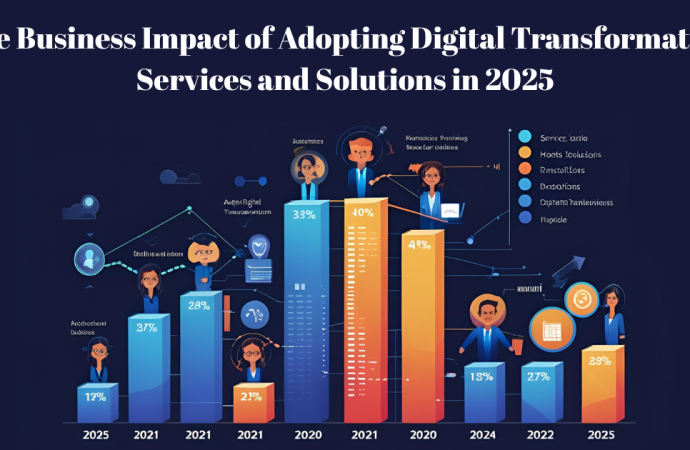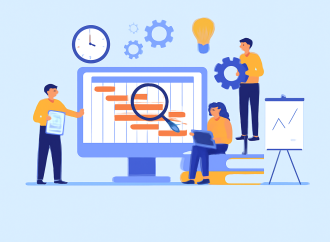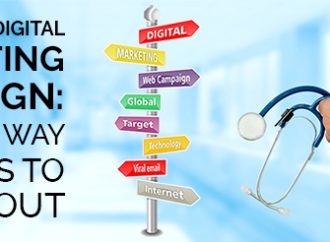The business world has reached a new inflection point. Digital transformation is no longer a buzzword—it’s a baseline requirement. In 2025, digital transformation services and solutions are at the core of how enterprises operate, compete, and innovate. From AI-powered analytics to agile cloud infrastructures, businesses are leveraging digital tools to not only enhance internal processes
The business world has reached a new inflection point. Digital transformation is no longer a buzzword—it’s a baseline requirement. In 2025, digital transformation services and solutions are at the core of how enterprises operate, compete, and innovate. From AI-powered analytics to agile cloud infrastructures, businesses are leveraging digital tools to not only enhance internal processes but also deliver unmatched value to their customers.
The businesses that have embraced this shift are thriving. Those that haven’t are playing catch-up or risking obsolescence. This blog explores the business impact of adopting digital transformation services and solutions in 2025, offering insights, strategies, and real-world examples to illustrate the true value of digital reinvention.
What Are Digital Transformation Services and Solutions?
Digital Transformation Services and Solutions are a combination of consulting, technology integration, and operational changes designed to transition traditional businesses into modern, tech-enabled enterprises.
These solutions can include:
- Cloud migration and infrastructure modernization
- AI and machine learning integration
- Business process automation (BPA)
- Customer experience (CX) transformation
- Enterprise data analytics
- Cybersecurity frameworks
- IoT and edge computing deployments
- Application modernization
Essentially, these services enable a business to rethink its operations, business model, and value delivery mechanisms using technology as the key driver.
Why 2025 Is a Pivotal Year for Digital Transformation
The reasons why 2025 is so critical include:
- Maturity of Emerging Technologies: AI, 5G, blockchain, and quantum computing are no longer experimental—they’re production-ready.
- Consumer Expectations: Digital-native Gen Z and Alpha generations demand personalized, frictionless experiences across channels.
- Sustainability and Compliance: New regulations and ESG standards are pushing businesses to become more transparent and data-driven.
- Global Disruption Readiness: Businesses have learned from COVID-19 and geopolitical tensions that agility is non-negotiable.
- Hyperconnectivity: With the explosion of IoT devices and real-time data, businesses must operate on a digital-first model.
Key Business Impacts
Adopting digital transformation services and solutions brings multiple strategic advantages:
1. Operational Efficiency
Digital transformation eliminates silos and automates repetitive tasks. By digitizing workflows, companies can increase speed, reduce costs, and ensure accuracy.
Examples:
- RPA (Robotic Process Automation) for back-office operations
- Cloud ERP platforms for streamlined resource planning
- Automated invoicing and procurement workflows
Stat: According to Deloitte, automation alone can reduce operational costs by 20%–30% over three years.
2. Enhanced Customer Experience
Customers expect faster, more personalized service. Digital platforms enable omni-channel support, AI-driven recommendations, and real-time feedback loops.
Examples:
- AI chatbots improving query resolution
- Personalized content using behavior analytics
- Mobile apps with seamless UX design
Stat: Salesforce reports that 88% of customers say experience is as important as products and services.
3. Data-Driven Decision Making
With powerful analytics tools, businesses can now track every touchpoint, analyze patterns, and make real-time decisions.
Examples:
- Predictive analytics for sales forecasting
- Real-time dashboards for KPIs
- AI insights on customer churn or market behavior
Insight: Forrester found that data-driven companies are 58% more likely to beat revenue goals than non-data-driven ones.
4. Innovation and Agility
Digital tools allow businesses to rapidly prototype, test, and launch products. Agile methods and DevOps frameworks ensure faster go-to-market timelines.
Examples:
- Agile sprints supported by cloud collaboration tools
- No-code/low-code platforms for rapid app development
- CI/CD pipelines for software updates
Stat: Gartner predicts that by 2025, 70% of new apps will be built using low-code tools.
5. Competitive Advantage
Digital transformation empowers organizations to create new business models (e.g., subscription-based, digital ecosystems) and outperform slower competitors.
Examples:
- Digital-first banks gaining market share over traditional banks
- E-commerce platforms outperforming brick-and-mortar retailers
- SaaS-based service offerings with global reach
Real-World Case Studies
Walmart
Walmart’s investment in automation, e-commerce, and AI has allowed it to compete effectively with Amazon. Its use of robotics, real-time analytics, and personalized digital experiences helped it grow online grocery sales significantly during 2023–2024.
Apollo Hospitals
Apollo has digitized diagnostics and implemented AI-based triaging. With telemedicine, smart wearables, and patient portals, it has set new benchmarks in operational efficiency and patient satisfaction.
Lufthansa
Through digital twin technology and real-time data from aircraft sensors, Lufthansa optimizes fleet maintenance and schedules, reducing downtime and improving safety.
Challenges in Adopting Digital Transformation
Despite the benefits, adoption isn’t without hurdles:
- High Initial Investment: Especially in infrastructure, training, and consulting
- Change Resistance: Employees may resist changing legacy habits
- Skill Gaps: Shortage of tech-savvy employees to manage new tools
- Cybersecurity Risks: Increased digital footprint requires tighter security
- Vendor Dependency: Complex ecosystems can lead to reliance on third parties
Best Practices for Successful Implementation
- Start with a Digital Strategy: Align transformation goals with business outcomes.
- Get Executive Buy-In: Leadership must champion the digital agenda.
- Adopt an Agile, Phased Approach: Begin with pilot projects and scale iteratively.
- Train and Upskill Employees: Ensure your team is equipped to handle new systems.
- Choose the Right Partners: Engage experienced providers of digital transformation services and solutions.
- Focus on Measurable KPIs: Track performance, ROI, and customer satisfaction.
Future Outlook for Digital Transformation
Looking ahead:
- AI will evolve into enterprise copilots, aiding decisions across all departments
- Green IT and sustainability goals will drive demand for efficient digital solutions
- Blockchain will enhance transparency in supply chains and transactions
- Edge computing will enable real-time decision-making at remote endpoints
- Digital twins will become mainstream in manufacturing, real estate, and urban planning
The market for digital transformation services and solutions is projected to reach $3.5 trillion by 2030, according to Statista.
Conclusion
Adopting Digital Transformation Services and Solutions is not just a trend—it’s a foundational requirement for businesses that aim to stay relevant and competitive in 2025 and beyond.
From improved efficiency and enhanced customer experiences to data-driven innovation and strategic flexibility, the benefits of transformation are both immediate and long-lasting. However, success depends on a well-executed strategy, cultural alignment, and the right technological partnerships.
Businesses that act now will not only survive—they will define the next generation of market leaders.
FAQs
1. What industries benefit most from digital transformation?
Industries such as retail, healthcare, banking, logistics, education, and manufacturing are seeing major impacts, though virtually every sector stands to gain.
2. How long does a typical digital transformation take?
Projects vary in size, but many organizations begin seeing significant results within 6–18 months after implementation.
3. Do small businesses need digital transformation?
Yes. With scalable, cloud-based services and modular tools, even small businesses can benefit from improved productivity and customer engagement.
4. What’s the difference between digital transformation and IT modernization?
IT modernization updates existing technology. Digital transformation goes further, reshaping business models, culture, and operations using technology.
5. How do I choose the right provider for digital transformation services and solutions?
Look for providers with domain expertise, proven frameworks, transparent pricing, and a strong portfolio of successful transformation projects.






















